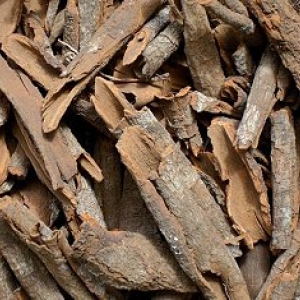Quinine bark is harvested today much as it has been for hundreds of years. The tree trunks are beaten and the peeling bark is removed. The bark partially regenerates on the tree and, after a few years and several cycles of bark removal, the trees are uprooted and new ones are planted.
The bark of the tree is medicinally active, containing a variety of alkaloids, including the anti-malarial compound quinine which interferes with the reproduction of malaria-causing protozoa, and quinidine, an antiarrhythmic. As a medicinal herb, cinchona bark is also known as Jesuit's bark or Peruvian bark. The plants are cultivated in their native South America, and were transported for cultivation in other tropical regions.
Nearly half of the harvest is directed to the food industry for the production of quinine water, tonic water, and as an FDA-approved bitter food additive. Quinine is very bitter tasting and commercially sold tonic waters often use quinine as it's bitter ingredient/component.
Troplandis has acces to the plantations managed by the local population in Eastern Congo.

